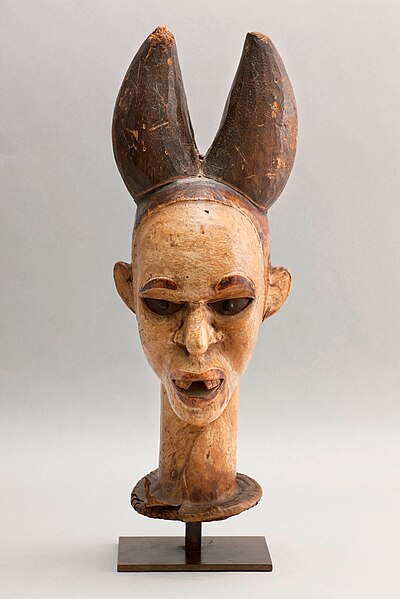File:Raccolte Extraeuropee - Passaré 00095 - Maschera cimiero Ejagham - Nigeria.jpg

Yanayin wannan rigayi gani: 400 × 599 pixels. Wasu yarjejeniyoyi: 160 × 240 pixels | 320 × 480 pixels | 513 × 768 pixels | 684 × 1,024 pixels | 1,367 × 2,048 pixels | 4,096 × 6,135 pixels.
Hoton asali (pikisal 4,096 × 6,135, girman fayil: 2.78 MB, irin MIME: image/jpeg)
Tarihin fayil
Ku latsa rana/lokaci ku ga fayil yadda yake a wannan lokaci
| Rana/Lokaci | Wadar sufa | Kusurwowi | Ma'aikaci | Bahasi | |
|---|---|---|---|---|---|
| na yanzu | 16:35, 14 Satumba 2012 |  | 4,096 × 6,135 (2.78 MB) | M.casanova | dustspots removed |
| 16:29, 14 Satumba 2012 |  | 4,096 × 6,135 (2.78 MB) | M.casanova | dustspots removed | |
| 14:34, 27 ga Yuli, 2012 |  | 4,096 × 6,135 (2.59 MB) | M.casanova | better resolution | |
| 12:53, 6 ga Yuli, 2012 |  | 534 × 800 (68 KB) | M.casanova |
Amfani da fayil
Wadannan shafi na amfani wannan fayil:
Amfanin fayil a ko'ina
Wadannan sauran wikis suna amfani da fayil din anan
- Amfani a kan arz.wikipedia.org
- Amfani a kan bg.wikipedia.org
- Amfani a kan bn.wikipedia.org
- Amfani a kan crh.wikipedia.org
- Amfani a kan cs.wikipedia.org
- Amfani a kan cv.wikipedia.org
- Amfani a kan de.wikipedia.org
- Amfani a kan en.wikipedia.org
- Amfani a kan fr.wikipedia.org
- Amfani a kan hu.wikipedia.org
- Amfani a kan hy.wikipedia.org
- Amfani a kan it.wikipedia.org
- Amfani a kan ka.wikipedia.org
- Amfani a kan kk.wikipedia.org
- Amfani a kan ko.wikipedia.org
- Amfani a kan krc.wikipedia.org
- Amfani a kan lbe.wikipedia.org
- Amfani a kan mg.wikipedia.org
- Amfani a kan os.wikipedia.org
- Amfani a kan outreach.wikimedia.org
- Amfani a kan pt.wikipedia.org
- Amfani a kan ru.wikipedia.org
- Amfani a kan ru.wikinews.org
- Amfani a kan sah.wikipedia.org
- Amfani a kan uk.wikipedia.org
- Amfani a kan xal.wikipedia.org
Duba ƙarin amfanin wannan fayil.


